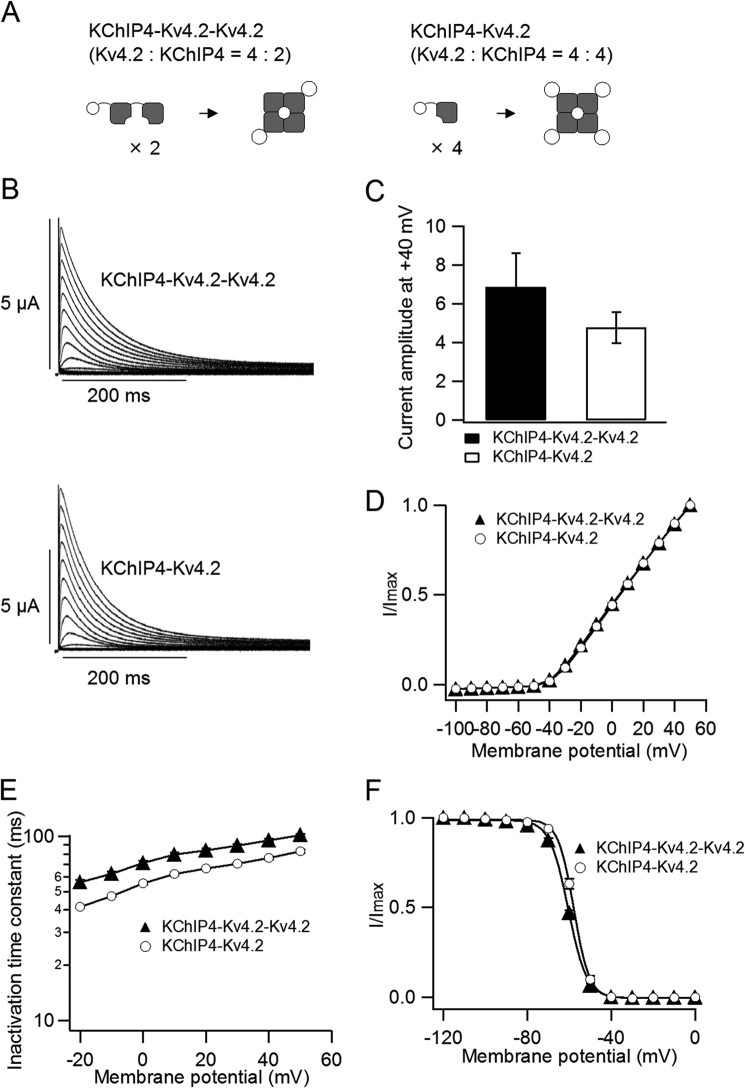FIGURE 4.
Biophysical properties of the tandem repeat constructs. A, schematic illustrations of the tandem repeat constructs. The KChIP4-Kv4.2-Kv4.2 construct forms a 4:2 (Kv4.2/KChIP4) channel (left), and the KChIP4-Kv4.2 construct forms a 4:4 channel (right). B, representative current traces from the tandem repeat constructs, KChIP4-Kv4.2-Kv4.2 (4:2 channel; top) and KChIP4-Kv4.2 (4:4 channel; bottom). The currents were elicited by step pulses from −100 to +50 mV in 10-mV increments. C, the peak current amplitudes at +40 mV for the 4:2 channel (left) and the 4:4 channel (right) (n = 5). D, comparison of I–V relationships for the 4:2 channel (filled triangles) and the 4:4 channel (open circles). The current amplitude at each potential is normalized to the current amplitude at +50 mV. E, comparison of the inactivation time constants from the 4:2 channel (n = 3) and the 4:4 channel (n = 4). The time constants were deduced by fitting a single exponential function to the current traces. F, steady-state inactivation curves for the 4:2 channel (filled triangles) and the 4:4 channel (open circles). The mean values of V½ for the 4:2 and the 4:4 channels are −60.6 ± 0.3 (n = 3) and −57.9 ± 0.5 (n = 4), respectively. Error bars, S.E.

